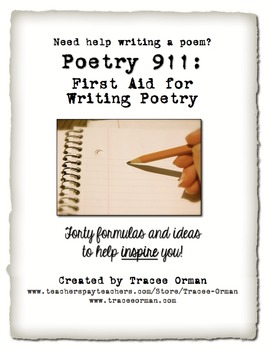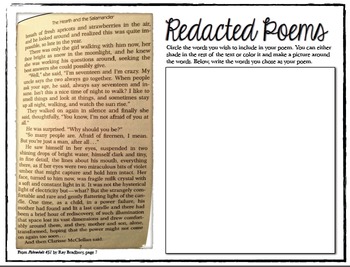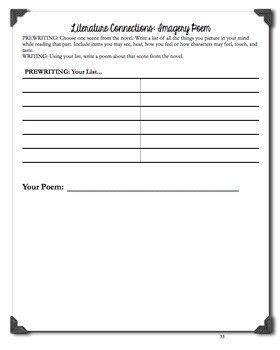Creative Writing Poetry - 50 Formulas to Help Students Write Poems
- PDF
- Easel Activity
What educators are saying
Description
Creative Writing Poetry 911: First Aid for Writing Poetry * Now over 50 Formulas for Helping Students Write Original Poems
This IS included in my mega bundle: ALL of my POETRY RESOURCES GROWING BUNDLE.
This student aid and handouts bundle features OVER 50 formulas for writing poetry. If you have students who struggle with creativity (excellent for L.D. students, as well as dominant left-brained thinkers), these formulas are excellent. Even the most uncreative student will be able to write poetry. Formulas with directions and examples include: haiku, diamante, cinquain, tanka, lantern, "I Am," bio, epitaph, "I Wish," lies, limerick, concrete, sonnet, chance, emotion, number, twaiku, poetweet, group, acrostic, redacted (black-out or found/chance), and so many more!
Almost every formula features an example. I included six additional online activities (great for schools with 1:1 laptops, tablets/iPads) and the handouts are ready to print and distribute. They can be used while reading any literature, as well: have students write a poem for one of the characters, themes, or about the setting! {Updated to over 45 pages on 4/15/15}
I make copies of the formulas and reuse them year after year. Students who need help check out a copy and return it when they are done. I've even had former students come back to check out a copy to help them with their other classes.
If you are looking for a DIGITAL version, you can find the Google Slides version here:
POETRY FORMULAS CREATIVE WRITING ACTIVITIES - DIGITAL
For younger students (grades 3 and up), you can find these in task card format here:
This IS included in my poetry resources package:
Poetry Resources Digital Download, Volume 1
If you wish to have LESSONS to go with writing poetry, check out my WRITE LIKE POETS: How-To Presentation and Activities for Students {Powerpoint} with handouts. It is over 100 pages, teaching students how to write many of these poems, step-by-step with examples.
I'm also offering the bundle in separate lessons with my POETRY PUNCH series. My first installment from my Write Like Poets bundle is: Poetry Punch: No-Prep Reading and Writing Poetry {William Carlos Williams}. Follow me to get updates when I add more!
Created and Copyrighted by Tracee Orman






